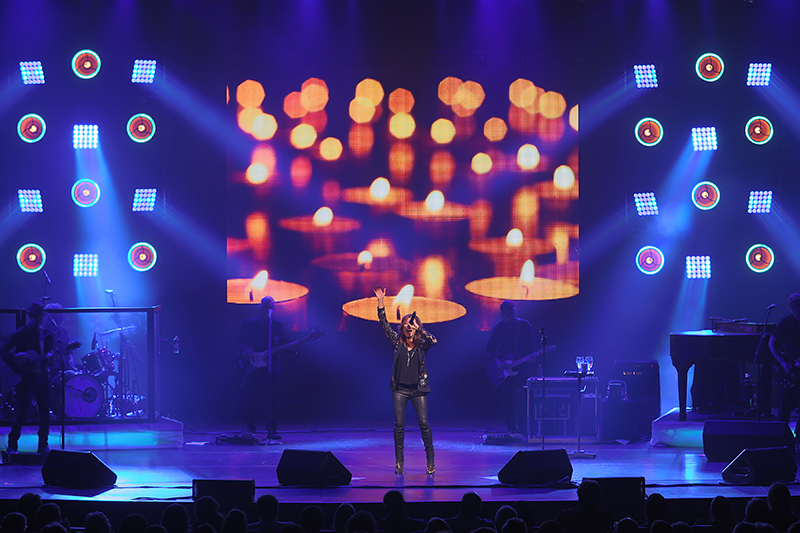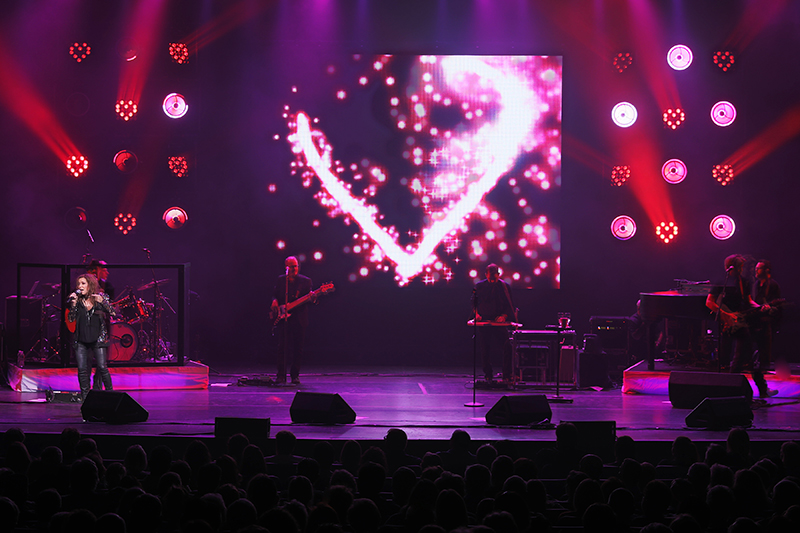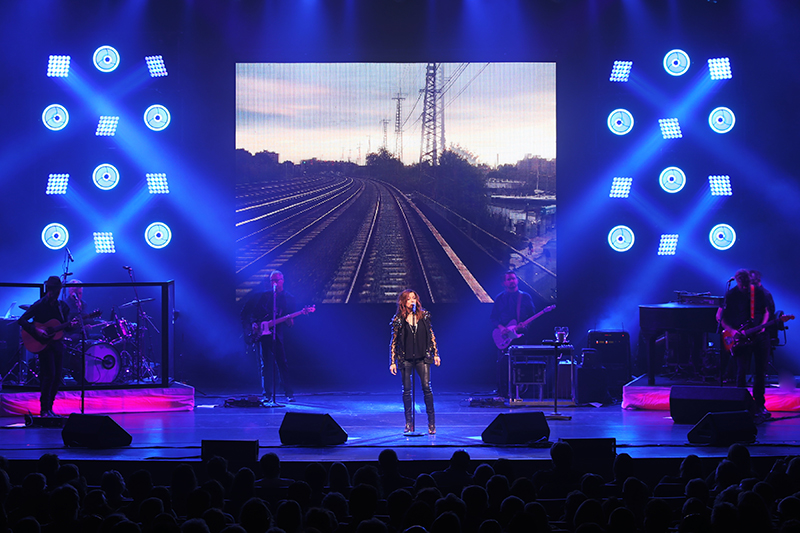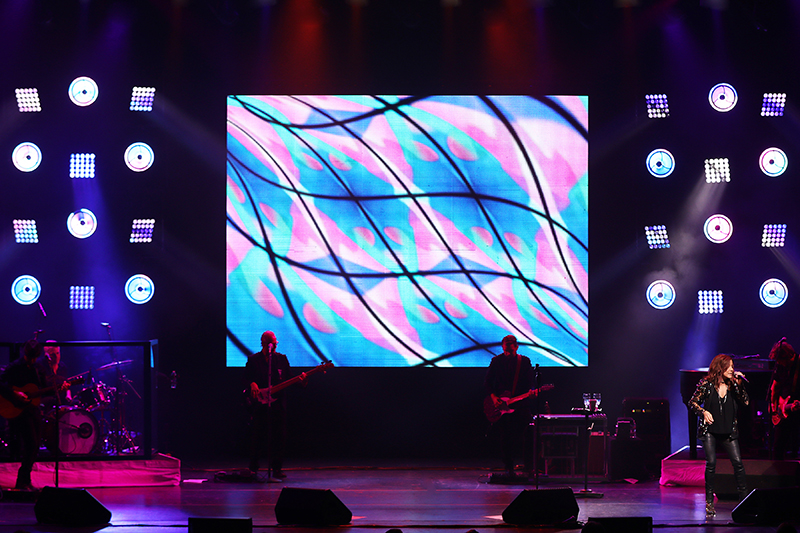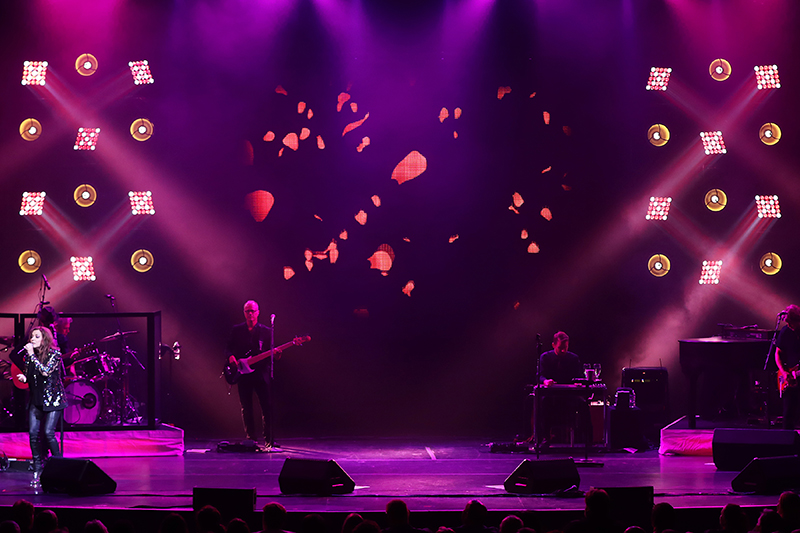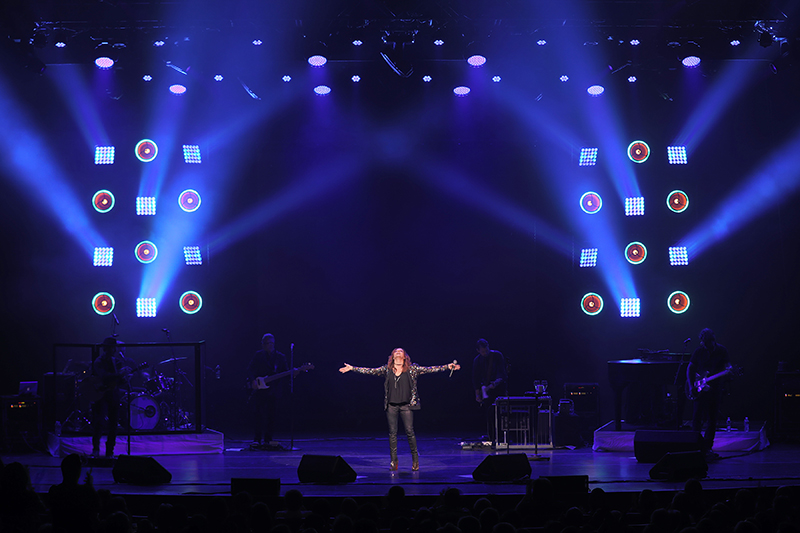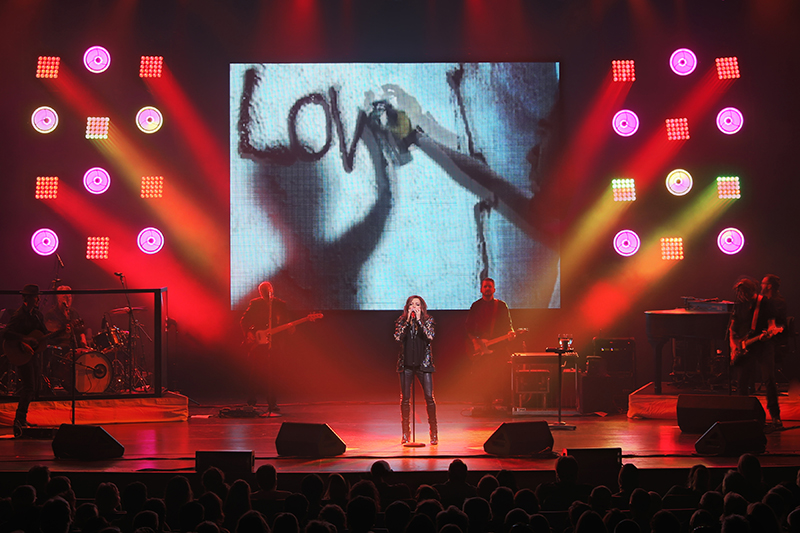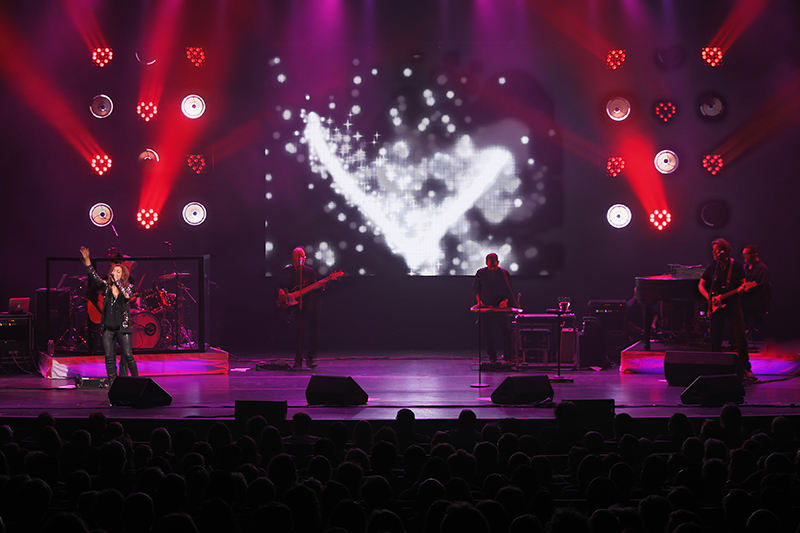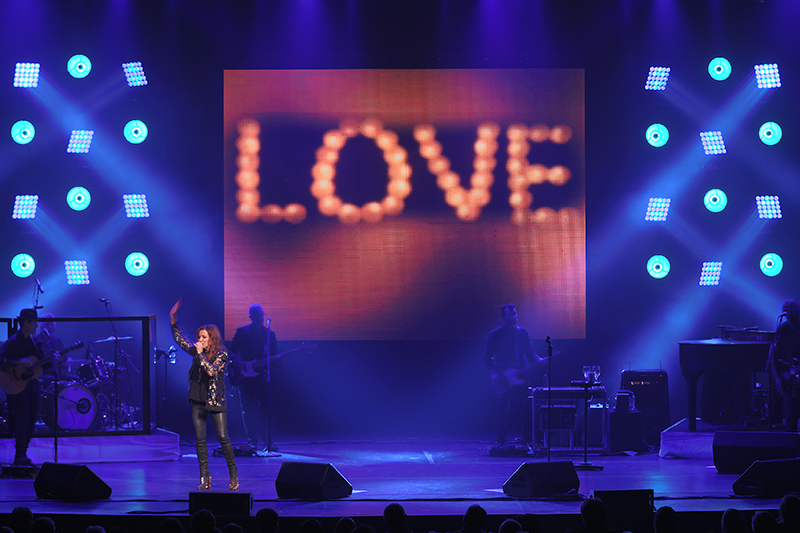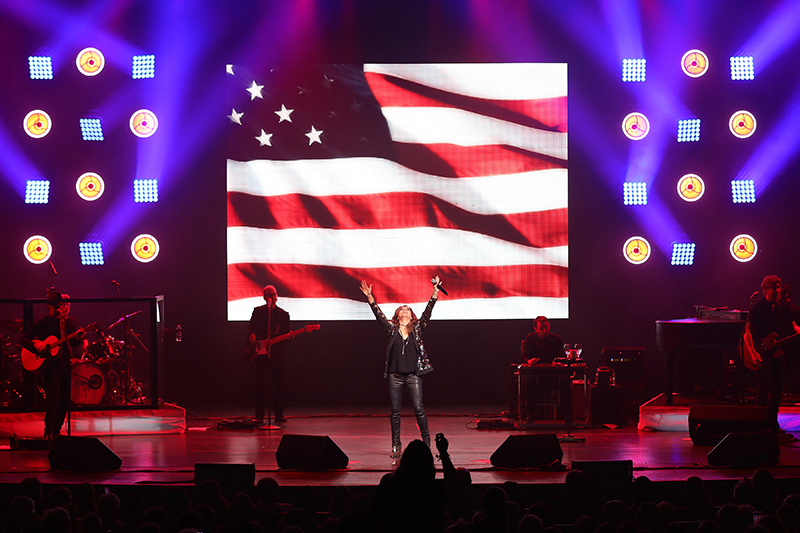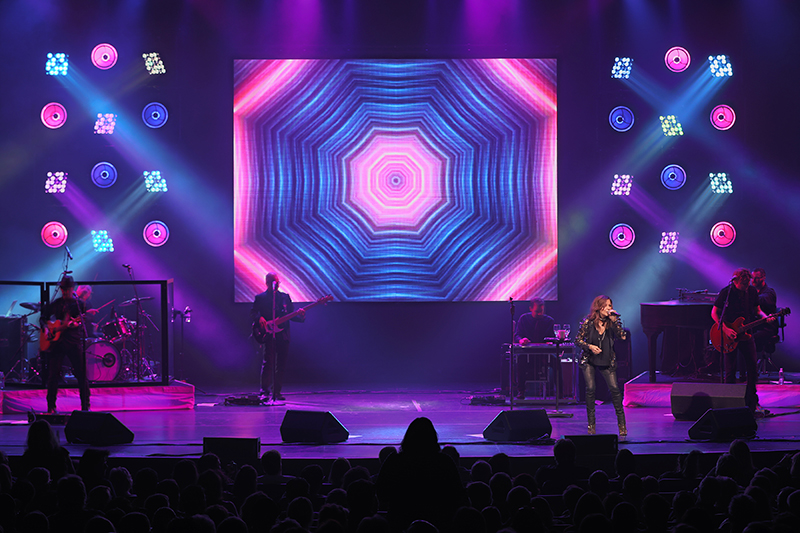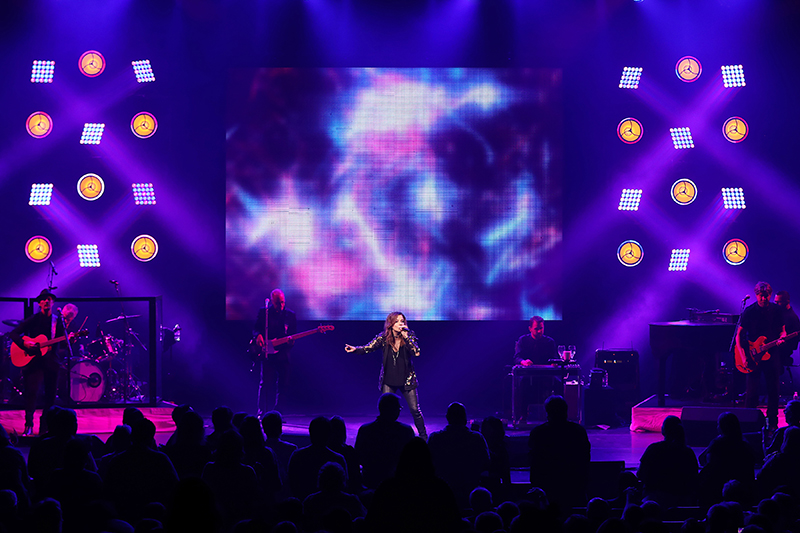
Production Team Pulls Color Data from Media Server Layers for 2019 Tour Looks
André Huff has at least four quite productive things going for him at this moment: He’s the owner of Limelight Design Service in Knoxville, TN; André designs and directs the lighting for Martina McBride’s shows, and others; he’s one of the most friendly and welcoming people in the business; and he’s also a masterful user of the Avolites line of console products, Avolites Ai Media Server products, and all of the features that make up the synergistic nature of the Avolites product line.
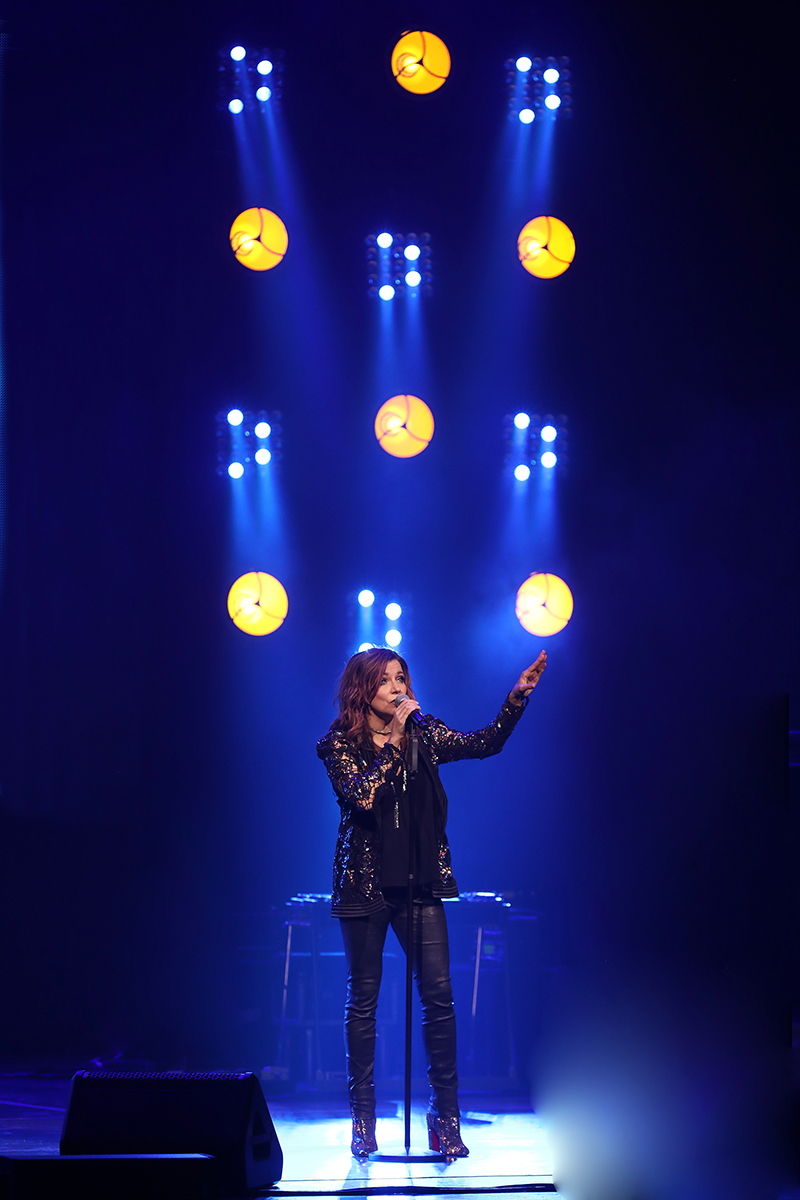
Bringing it All Together
“Man, I love lighting Martina,” emotes Huff. “She is one talented singer with a repertoire the size of her heart, and that really makes for an excellent challenge for the design team. The features Avo packed into Version 12, on both the consoles and the servers, is what they’re calling Synergy. It’s ironic that it does exactly that for our team — it helps us synergize the information coming from the media servers, console, and the mood of what Martina is doing onstage.”
André is talking about a new feature set that Avolites has developed that allows you to have access to your media server layer color information when building your looks, which you can apply directly to fixtures in your rig. On the Avolites consoles, when you go into the effects engine, you have several options for effect building — a simple builder with pre-built effect palettes that can be manipulated, a Keyframe Shape generator, and Avolites’ all powerful Pixel Mapper.
The Avolites Pixel Mapper is ostensibly a four-layer media server built into the console disguised as an effects engine, and through the pixel mapper you can literally create your own content — moving shapes, color changes, text, transitions, animations — and the way that Avolites has created this Pixel Mapper, it walks you through building effects. You’re taken through quick steps as you build your effect — choose a shape, animate that shape and whatever else you want to output, and you’re off to the races. With the new Synergy features, when you’re in the Pixel Mapper, one of your new choices from which to build an effect is a tab in the engine called Ai, and from this tab, you have access to ingest the video content over your pixel map from the content being played back over your media server. Through the Ai tab, you can select the screen fixture in your media server you want, and push its color information out to your fixtures.
With very minimal setup, you tell the console which media server screen fixtures you want to grab the video content from, “screen fixtures” — nomenclature that essentially means in the setup of the Ai server the number of surfaces you want to send different content to at the same time, each surface can have multiple layers. Once your screen fixtures, or video reference destinations, are set up, not only is it as easy as selecting your fixture group, selecting the Pixel Mapper, and choosing what you want. You are also given a live video preview of the clips playing on those screen fixtures you set up, which is literally sending the console the video content from your media server you want to take information from over the Titan network and playing the content over your pixel map of fixtures and using the video for the color information while still giving you control of all the other parameters of the lighting fixture, and you’ve got live previews of your content playing.
“What I love about these new Synergy features is how quickly I can get to them,” says Huff. “Getting to any of this stuff is as easy as opening the Pixel Mapper, and the new tab you see is the Ai tab where all of this new access lives. Once I go into the Pixel Mapper and select my group of fixtures that I want to use, and in the Ai tab, I select from which screen surface that I want to grab color data from on that surface. It’s truly that easy.”
“The features in Synergy, we invent these types of feature sets to make programming even faster than it is on any Avo desk,” says Brad White, national sales manager for Avolites/Group One Limited. “ André is an exemplary user of the Synergy features because they help him make magic faster between media server and console. The work he has done on Martina over the years just continues to evolve into a masterpiece.”
“What’s been great about Synergy is that I’m not carrying a front truss or a rear truss, just a video wall and what I’d call a modified floor package,” says Huff. “On either side of the video wall, we have four rows that alternate between Elation’s ACL Matrix 360 fixtures and MegaLite’s Circa Scoops. Everything is pixel mappable, so it’s all pixel mapped and ready to use with the Synergy features. That itself is kind of funny because there is so little setup beyond the normal programming of the console and media server that now you have this new incredible design tool with its own tab in the Pixel Mapper – truly synergistic.”

Lighting André and Video André
Avolites Synergy features have created an interesting and new working relationship between André Huff, the lighting designer, and André Nolan, the video director. Yes, it’s the tour of the two Andrés, and they have figured out an excellent way of working together through the Synergy feature sets. “We still think it’s funny that there are two of the André variety working on this tour,” laughs Huff, “but we have created a really excellent way of working together and creating cool stuff.
“Our video director creates a lot of our content, and he and I will work together on ideas with color and shape. He makes these beautiful pinwheels and clips with flowing content, and I can literally write my entire color palette plan from the video content. When Video André is playing something with a particular color that feels good, I can very easily assign the color output from the Ai server right onto a group of fixtures from his content, making the stage picture congruous, making it look right.”
The 2019 summer Martina rig that Huff and production manager Allen Ditto pitched to Martina’s camp consists of the video wall, which is provided by Moo TV, and is comprised of 12mm ROE video panels, hanging 16 by 12 feet. The lighting package carried from Christie Lites includes 12 Elation ACL 360 Matrix moving heads, 12 Mega-Lite Circa Scoops, and eight Chroma-Q Color Force 12 units for set lighting.
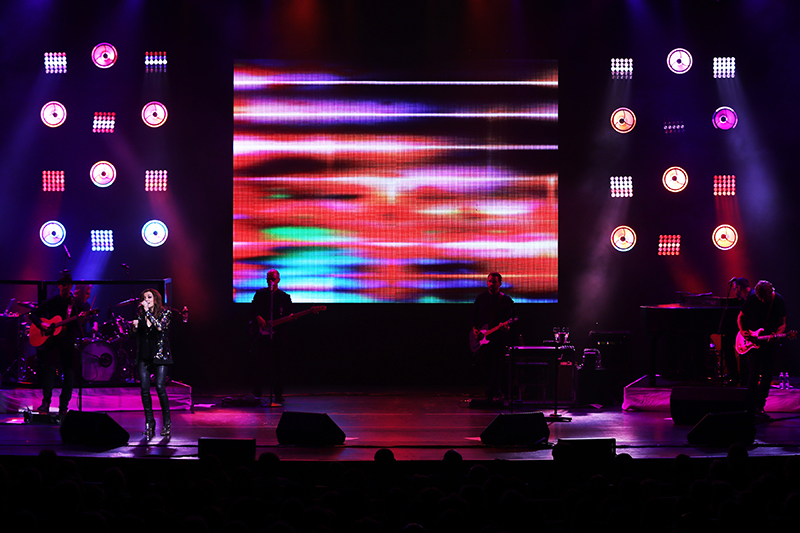
André is using a Christie distro and data package along with their fixtures and truss, while carrying his own Avolites Sapphire Touch and Ai R4 media server package on the road. For front and rear truss lighting, Limelight specified venues to provide a front truss with 12 moving wash and 8-lite Moles on it as well as a rear truss with another 12 moving wash lights. “We get a lot of variation when we spec house provided equipment, but it’s nothing that Synergy can’t handle,” says Huff.
Synergy’s easy to apply features make placing the color information from a layer in your Avo desk right onto your fixture groups, and Huff has made solid use of that since he had his hands on it. “There are several instances where I will literally just run the layer color information from Ai on top of just the Circa Scoops for one particular song,” he states, “and there are other times when I just run the color info over the ACL Matrix units. Having instant access to the color data from the media server layers is a time and stress saver, and has altered the way I look at picking fixtures and specifying gear, because now there is so much more I can do with it.”
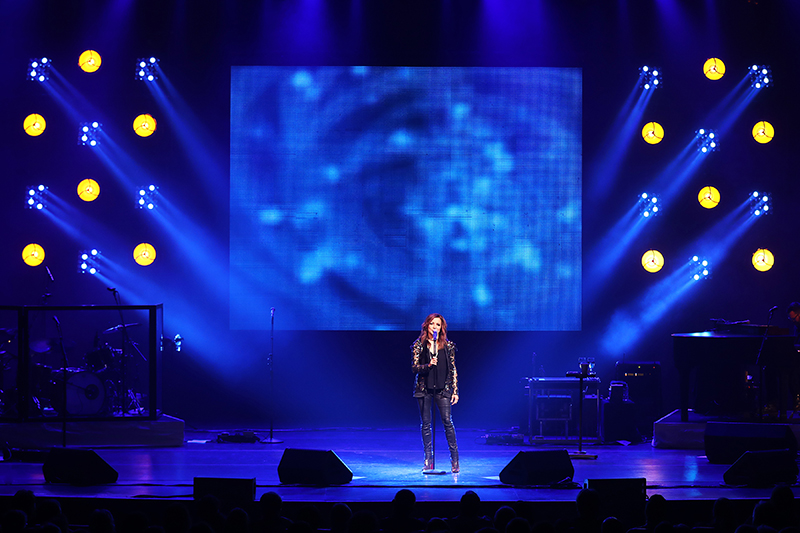
Concept on this one was a big deal, because the overall goal was to fit the rig into one truck that would be able to handle to the gamut of summer venues, from sheds to arenas to outdoor stages. “The lighting concept, knowing that I would use Synergy, was to have high pixel count fixtures,” Huff says. “The challenge was to design a system that would fit into the single truck we carry and be versatile for all different sizes and configurations of stages. In the summer time, I don’t use hard edge gobo fixtures in my design because we mostly play out doors, and summer outdoor haze is as you know very unreliable. I chose to go with more eye candy and wash fixtures for the summer when I know haze will be inconsistent. Then, when we go back to inside shows for the Christmas tour, I will use more gobo fixtures for air patterns and texturing. It’s all just being aware of the balance you need between the seasons.”
If you’ve never heard Martina McBride, met André Huff, or seen the Avolites Synergy system in action, get out this summer, see Martina, and meet André so you can knock these three things off your list.
For more details on André Huff’s work, check out www.limelitedesignservice.com
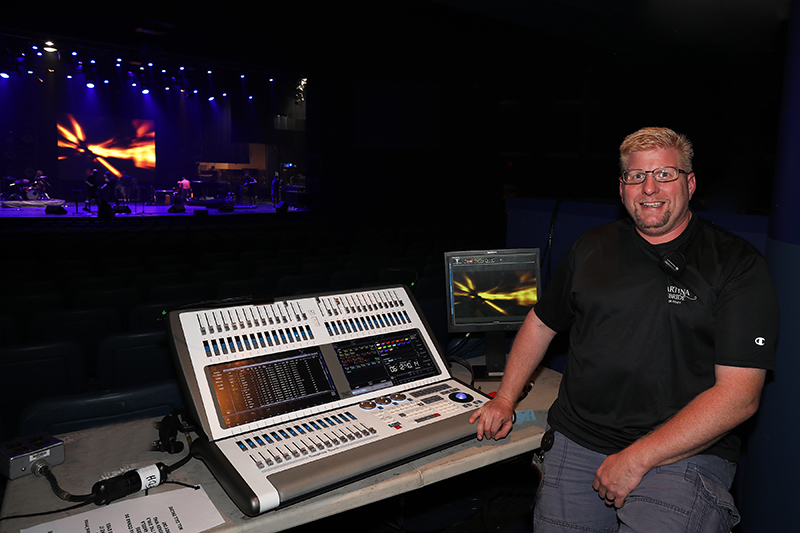
Martina McBride 2019 Tour
Crew
- Tour Manager: Mark Hively
- Production Manager: Allen Ditto
- Production/Lighting Designer: André Huff
- Lighting Co: Christie Lites
- Christie Lites Rep: Rod ‘Red” Gibson
- Tour Rigger/Lighting Crew Chief: Chris Bennett
- Lighting Console and Ai Server: Limelite Design Service
- Video Director: André Nolan
- Video Co: Moo TV
- FOH: John McBride (Martina’s husband)
- Monitors: Glen Collett
- A1: Ernie Gonzalez
- Sound Co: Clair
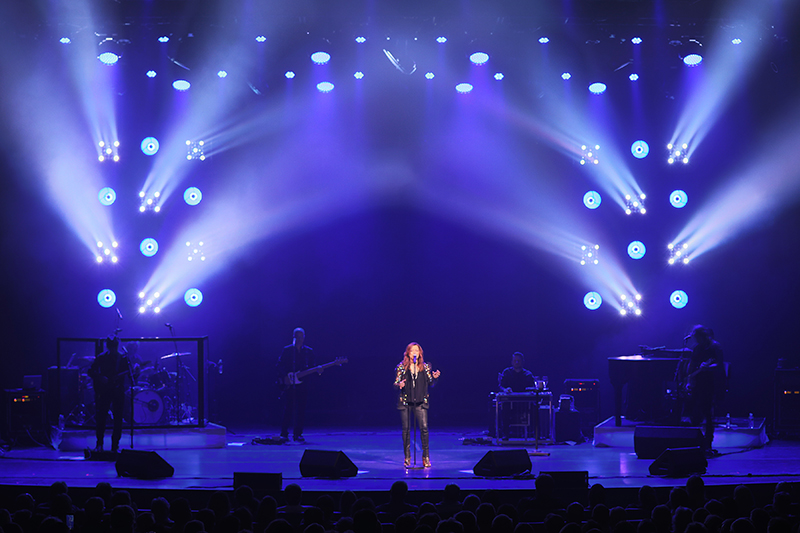
Gear*
- 1 Avolites Sapphire Touch (Limelight supplied)
- 12 Elation ACL 360 Matrix moving heads
- 12 Mega-Lite Circa Scoops
- 8 Chroma-Q Color Force 12 fixtures
- 1 16’ x 12’ video wall (ROE 12mm panels)
- 1 Avolites Ai R4 media server (Limelight supplied)
* Andre Huff also specifies two dozen moving wash lights and 8-lite Moles from the venues’ house rigs.
More 2019 Martina McBride tour photos by Todd Kaplan:
